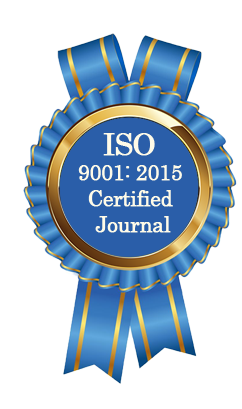| All | Since 2020 | |
| Citation | 105 | 60 |
| h-index | 4 | 4 |
| i10-index | 3 | 2 |
WJAHR Citation 
Login
News & Updation
Best Article Awards
World Journal of Advance Healthcare Research (WJAHR) is giving Best Article Award in every Issue for Best Article and Issue Certificate of Appreciation to the Authors to promote research activity of scholar.
Best Article of current issue
Download Article : Click here
Indexing
Abstract
OLFACTORY DYSFUNCTION AMONG COVID-19 PATIENTS IN MOSUL, IRAQ
Ali Zeno Thanoon AL-Tahoo*, Mohammed Maher Mohammed Salih and Ala’a Ibrahim Saleh
ABSTRACT
Background: Many human strains of SARS-CoV-2 cause anosmia in infected patients by invading the brain through the neuroepithelium and reaching the olfactory bulb. Olfactory dysfunction is one of the most prevalent COVID-19 symptoms. Most patients restore their olfactory function completely in a month, although a lot of them experience residual olfactory dysfunction. Guidelines for treating COVID-19-related olfactory dysfunction are currently lacking, but many studies have indicated that olfactory training may help individuals with post-viral loss of smell. Objectives: Is to determine whether COVID-19 PCR positive individuals had anosmia or hyposmia and how they responded to smell exercise in Mosul City, Iraq. Methods: Two hundred COVID-19 (PCR-positive COVID-19) patients with olfactory impairment are included in this case series prospective study. The study was carried out from June 1, 2021, to May 1, 2022, at the Al Jamhoori Teaching Hospital for Surgical Specialties' Department of Ear, Nose, and Throat, Mosul City. The questionnaire includes four sections, section one for socio-demographic information, section two for the patients’ olfactory dysfunction with its onset and duration, section three for patients’ different COVID-19 related ear, nose and throat symptoms and section four for smell exercise details. Results: The study included 200 patients with olfactory dysfunction. Of them; 105 (52.5%) patients were males and 95 (47.5%) patients were females. With male to female ratio of 1.105:1. Moreover: the mean age ± standard deviation of the study participants was 39.23 ± 7.27 years. Anosmia was prevalent among 133 (65.5%) patients while hyposmia was prevalent among 67 (33.5%) patients. Furthermore; 129 (64.5%) patients had sudden onset of olfactory dysfunction versus 71 (35.5%) patients had gradual onset of olfactory dysfunction. Nasal obstruction is reported among 86 (43%) patients, rhinorrhea among 77 (38.5%) patients, headache among 71 (35.5%) patients, sneezing among 55 (27.5%) patients, nasal burn sensation among 51(25.5%) patients, post nasal discharge among 39 (19.5%) patients, congested throat among 35 (17.5%) patients and epistaxis among 12 (6%) patients. Statistically significant difference was found between patients with anosmia and hyposmia regarding patients’ number (P value <0.001), recovery state after smell exercise (P value <0.001). Conclusion: COVID-19 patients with olfactory dysfunction had a favorable outcome, and most of patients recovering quickly with concomitant smell exercises. In COVID-19 individuals, olfactory impairment was typically self-limiting in younger age groups, indicating a mild illness. Olfactory dysfunction is a significant public health concern that should be addressed in the diagnosis, prognosis, and treatment of COVID-19 patients.
[Full Text Article] [Download Certificate]
